In the ever-evolving landscape of political campaigning, advertisements have emerged as the unsung heroes of political strategy. This study aims to shed light on the political advertising campaigns of the BJP and the Congress. As part of the study, 900 ads running on March 18 (irrespective of the date of their origin) across Google platforms, including YouTube were monitored (Source: Google Ads Transparency Centre). During this 24-hour period, while the BJP posted 1,111 ads, INC posted 10 ads. BJP broke its record in ad spending, for the last five years, in February 2024, surpassing what it spent since February 2019 (Source: Google Political Ads CSV file).
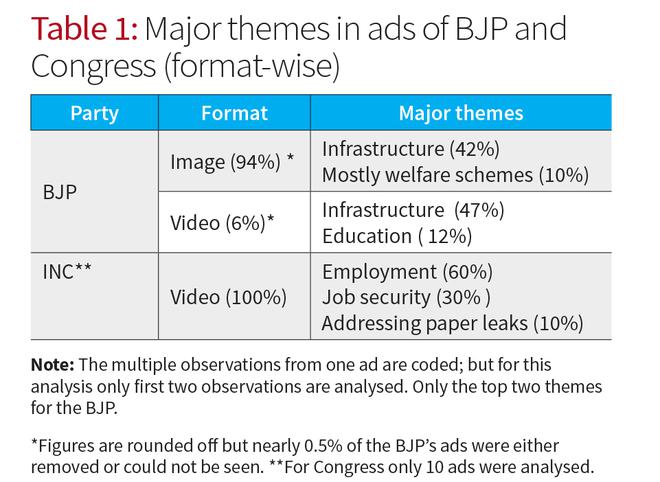
Micro-targeting States
While the BJP as well as the INC employed location-based targeting, no gender or age filters were used by either party. The BJP targeted the majority of its ads to Andhra Pradesh (50%) and Odisha (39%). The remaining 11% of the ads were targeted at multiple States, mostly from the Hindi belt (Table 2).
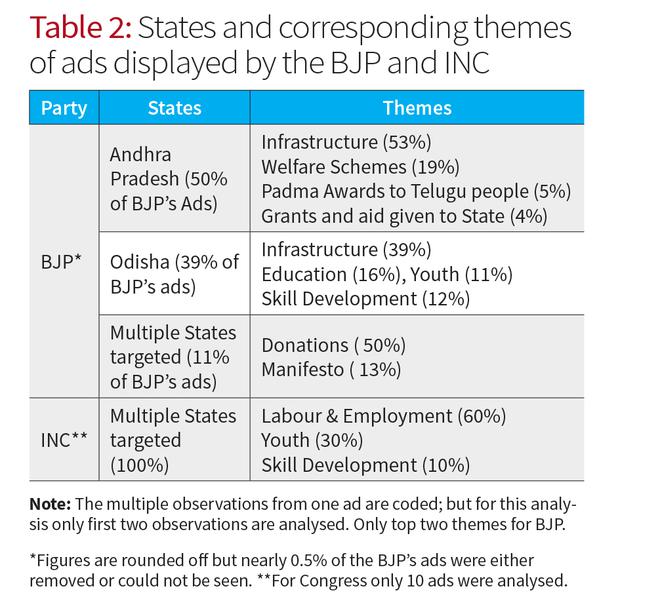
The study of such location-specific targeting, along with its correlation with expenditure and theme of ads, has revealed both parties’ selective approach to engagement with the electorate from different parts of India.
In Andhra Pradesh, where a staggering 50% of BJP’s ads were targeted, around 53% of them were dedicated to infrastructure development. A similar trend is observed in Odisha, where majority of the ads were focused on this theme (39%). In Odisha, the BJP’s focus seems to be on the youth demographic, with most of the ads highlighting training programs, employment opportunities, and educational institutions (Table 2). It was observed that in most of these ads, PM Modi is carrying a gamchha, assumingly from Odisha. These ads proudly announced the establishment of AIIMS, IITs, and IIMs in the State. The factual accuracy of such claims, however, is debatable as there is only one AIIMS in Bhubaneswar, which was established in 2012 before the Modi government rose to power. (In such ads targeted to Odisha, Bhubaneswar has been excluded.)
Interestingly, ads appealing for donations in the name of “Viksit Bharat” were displayed in all States and Union Territories, including south Indian States. However, ads soliciting suggestions for the manifesto specifically excluded South Indian states.
The INC ads on ‘PehleNaukriPakki’ and a massive investment project of ₹500 crore for start-ups excluded most north Indian States. However, ads targeting specific locations in major north Indian States especially focused on loan waivers for farmers and the reduction of GST in the Minimum Support Price. The ads targeted towards the northeastern States focused on employment and job security. Unlike the BJP, no Congress ads were asking for donations.
Google Ad campaign expenditure
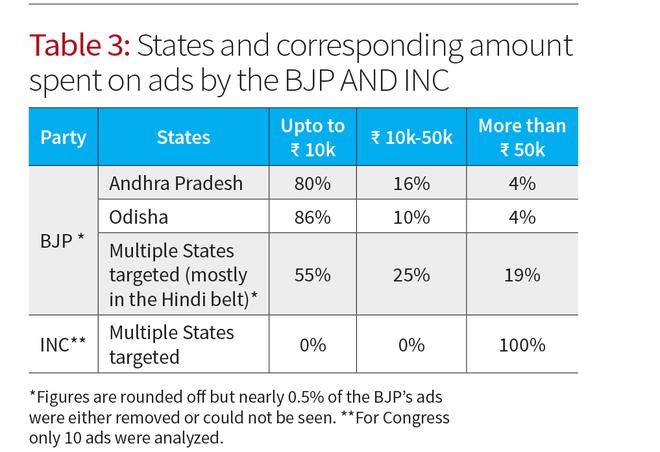
The maximum spending by the BJP was on ads related to its manifesto, donation requests, and infrastructure. While BJP, on average, had spent under ₹10,000 per ad for most of the ads (79.8%), a disproportionately high amount was spent (₹4,00,000 per ad) for some of the ads focusing on infrastructure and developmental projects. Further, such ads with the highest spend per ad were mainly shown in Odisha. In contrast, Congress’s highest spending in this period goes up to ₹3,00,000 per ad on video.
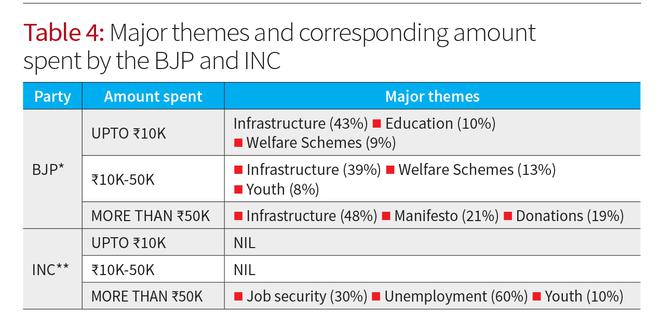
The BJP displayed ads for donations with hashtags like #MainHoonModiKaParivar. Chhattisgarh was excluded from such ad campaigns. In Andhra, the tagline “The truth must be known” prevailed, contrasted with Odisha’s “Modi ki guarantee.” Congress’s video ads were running under taglines such as ‘PehleNaukriPakki’, ‘KisanNyayYojana’, ‘BholetohNahi’, ‘NariSamman’, and ‘YuvaNyay’.
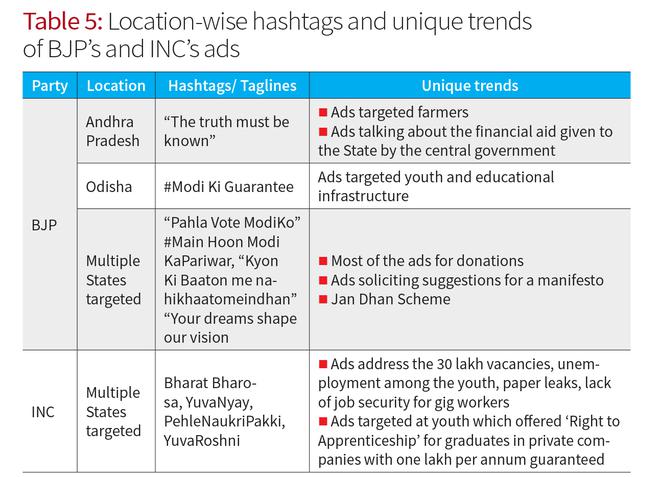
While the INC doesn’t seem to be very reliant on Google ads for its political campaigning, the BJP has been spending substantial resources on digital advertising. The BJP seems to be confident of its voter base in the Hindi belt, with ads in the region majorly appealing for donations or seeking suggestions on its manifesto. All in all, regardless of the subject or the location, all ads prominently featured PM Modi’s face, underscoring the BJP’s reliance on the “Modi factor” for electoral success.
Sanjay Kumar is Professor at CSDS, Aditi Singh is Assistant Professor at O.P. Jindal Global University, Jyoti Mishra is a Research Associate with Lokniti-CSDS and Abhishek Sharma is a short-term researcher with Lokniti-CSDS.







